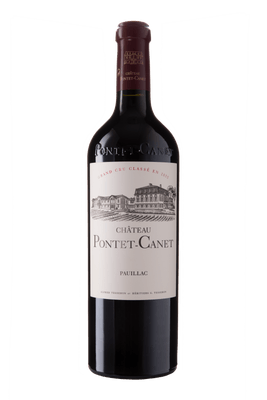2000 Pontet Canet

Buying options
Tasting Notes
Extremely pretty aromas of mineral, blackberry and raspberry. Full-bodied, with well-integrated tannins and a medium finish. Well-crafted red. The best Pontet-Canet ever. Best after 2010. 2,330 cases made. James Suckling, Wine Spectator 2003
Critic Scores
Average Score
Wine Spectator
Robert Parker
More reviews and scores
Upgraded in score over my original rating, which was several points lower, Alfred Tesseron has done a remarkable job since 1994 with Pontet-Canet, which has been hitting first-growth levels since 2003. But the 2000 also shows exceptionally well. In need of another decade of cellaring, this dense purple wine has a classic nose of incense, charcoal, creme de cassis, and subtle new oak. Full-bodied, powerful, still very tannic, and shockingly backward, this is a big, rich wine that has put on weight and seems to need more time than I originally predicted. Anticipated maturity: 2015-2035+. Wine Advocate.June, 2010
Tasted at the Pontet-Canet vertical, the 2000 Chateau Pontet-Canet is perhaps where things start getting interesting, as Alfred Tesseron's top-to-toe reconfiguration of the vineyard and vinification began to impact and ameliorate the wine. It has a lovely bouquet of blackberry and briary fruit, hints of black truffle developing, later damp earth. There is an intensity here, if not the complexity of the best millennial Pauillacs. The palate is medium-bodied with a mixture of red and black fruit, cedar and sous-bois percolating up through and rendering it a "serious" Pontet-Canet in keeping with the vintage. There is a subtle and yet insistent grip on the finish. It has always been a tannic wine, but these are now softening, albeit at a slower pace than some might like. Therefore, I might be inclined to hold on to bottles for another 3-4 years. Tasted February 2016. Jul 2016, www.robertparker.com
About the producer

Ch. Pontet-Canet is one of Pauillac’s top estates, and one of its largest at 81 hectares. Although classified as a Fifth Growth, these days it consistently competes with the First Growths